[align]Review of the MkII MMT/Blackwater
by Mike K
Written: September-October 2006
Introduction
My favorite case type for a wristwatch is asymmetric, particularly as found on the Benrus Type I/II watches, and the Marathon Adanac and Navigators (BTW all issued to American forces). There is something about the simple efficiency of just a slight alteration to the shape of a case to make an effective crown guard, while also giving the watch an altogether smoother outline and deleting the sharp edges of the crown and/or the crown guard itself, that just tickles my sense of style; that "form follows function" thing, and yet is pleasing to the eye at the same time. It's the same beauty I find in the "feet" of the Mac G4, which act as feet when the computer is placed on a surface, but are handles when you want to carry the computer, and yet are attractive in a sculptural sense. Another way of doing this are by simply moving the crown to the 4 o'clock-ish position as on the Seiko 6309 family of watches. As much as I like this solution, I happen to prefer, by a little bit, the crown at the standard 3:00 position (call me pedestrian). So, when Bill Yao, of MkII Watches, first leaked on the <a>MWR forum</a> he might be planning a Benrus TypeI/II homage I was more than a little intrigued.
For those of you who don't know, Bill Yao started http://"http://www.mkiiwatches.com" ...">MkII Watches a few years ago with the production of dials and hands for the embryonic hobby of "franken-watching": the process of customizing the looks of watches by installation of alternate hands, dials, and bezels. His products were mostly for Seiko dive models and certain ETA 28xx powered watches (O&W divers come immediately to mind). At some point he also started offering installation of those parts. Then about three years ago he came out with his first complete watch, the <a href="http://www.mkiiwatches.com/WSWrapper.jsp?mypage=cg01.htm" blank="target">Quad 10[/a], which is an homage to the British MoD/RAF Mk XI watches. By all accounts the Quad 10 is a high quality timepiece and would probably be at least twice the price if produced and sold by one of the big houses.
Initial tidbits of information were leaked (if memory serves) in March 2005 that a new watch, a styling homage of the Benrus TypeI/II, was somewhere in the future. Within a few weeks we found Bill considering this new watch a "product improved" version of the Benrus TypeI/II watches, and not a clone - sort of a "What if Benrus were to be commissioned today to make these watches?" He posited, and I agree, most likely it would have a sapphire crystal, 20mm lugs, and somehow do away with the troublesome 2-piece stem. It?s arguable whether the guts would be quartz or mechanical, but this watch was for the WIS community, so mechanical it is.
So, we found out it was to be powered by the tried and true ETA 2824-2, with options for dials, hands and bezel inserts to mimic both the Benrus Type I & Type II watches, along with several other dial and hand options already in the MkII parts catalog, and with or without date window so you could make a Type III watch — the watch that you always thought the Benrus should be. Somewhere along the way an option for anti-reflective (AR) coating of the crystal materialized (after much begging and whining on the various forums), and the possible option of fixed strap bars (also because of a lot of begging). By June 2005 initial production delivery was slated as "some time early in the new year", with late January-early February being hinted at. Actual shipment of the first production MMTs began in late March of 2006.
My Benrus TypeII/Class A is one of my favorite watches (and from here on, for brevity, I will mostly refer to it simply as "the Benrus") but there is no way that I am going to wear it as a daily watch - certainly not without a very thorough overhaul (which it needs), and perhaps not even then. So, I thought, here was an opportunity for me to wear a Type II-like watch, without worry, for about the cost of overhauling my original (and perhaps for even less). Anyway, I was immediately on the bandwagon of what was to become known first as the "Blackwater" then - after some possible clash with another commercially known, though not watch related, Blackwater - it became the "MMT". I followed and posted the progress of its prototyping and production with keen interest on several forums (to the point where I was accused of being a shill for Bill, which I adamantly deny). Also, as far as I know, I was the first person to send a pre-production order payment.
[One caveat about this review - I will try and judge the MMT on its own, but as it is indeed a homage watch (and I purchased it as such) every now and then a direct comparison will probably slip in, which, when it occurs, shouldn't necessarily be a reflection, good or bad, of the MMT.]
Packaging & First (and second) Impressions
I received my eagerly awaited package via USPS in the third week of May 2006 in a sturdy, and well labeled and sealed cardboard box. Upon opening the box I found a reasonable amount of Styrofoam "popcorn" and bubble wrap cushioning what has become a Mk II Watches trademark - a black plastic watch carrying attachČ- and though certainly not a http://"http://www.pelican.com/cases...blank">Pelican it is a handsome presentation device which complements the tool-like nature of the watch it contains.
Within that case I found a well padded (gray open-cell foam) interior with several cutouts to contain the watch, which was on an included gray NATO strap, and a few accessories - a nice quality springbar tool, and 10 extra springbars in a translucent plastic box - along with warranty cards.
As this was my first new (vs. vintage - where vintage = cheap) watch that I've purchased in over 5 years (and since it seems to have become de rigueur to do so) I snapped a few photos to commemorate the occasion of opening the box, etc. And oh what an occasion! The watch is absolutely gorgeous and everything that I could have hoped for.
My first impression was the MMT was more than an homage to the Benrus; it was damned near a clone. It didn't look "kind of" like it - without the original to compare it to, the MMT looked, initially to my eyes, and except for the finish, exactly like the Benrus. Of course on further examination somethings weren't perfectly indentical and I will go into these differences in detail in a later review. Oh, and also there was one thing wrong (though totally my fault).
MkII Watches, being originally a watch parts customization sales site, naturally allows one to customize their watches with parts from their catalog. For the MMT there are 10 dials, some with and some without date, 5 minute and hour hand combinations (some with selectable color variants), and 5 sweep seconds hands, and 3 bezel styles. Then there are also three "upgrades" which will cost a few extra dollars. These are AR coating of the underside of the crystal ($34), 4 alternate colored tip seconds hand ($7.50), and white on black or red on black date wheels ($25 — standard is black on white). My math gives the total possible number of combinations as going into several thousand! Let's just say you need to go visit http://"http://www.mkiiwatches.com/W...lank">the site to fully appreciate the choices. It was only during the writing of this review I realized why the lag time between ordering and receiving a watch from Bill can take so long — he is assembling and testing each watch as it is ordered.
And as I said earlier, I love my original Benrus Type II, thus I intended to pick my options so the new watch would be as close a Benrus Type II clone as possible (with the exception of adding the date window). The dial would have numerals for the indices a la USAF navigator watches, and ladder-style hands, and a GMT bezel. And though I picked the date window option, I picked the white on black date-wheel to minimize its visual impact. And thus we come to what was wrong in my order. Unfortunately for me I mismarked my order form, what with all the myriad of choices, and got the dive bezel insert instead of the GMT bezel insert (totally my fault - I got exactly what I ordered - c'est la vie). I later enquired Bill about being able to change the bezel insert, but, as will be explained later, this is not an easy correction.
Watch Dimensions
(My measurements with a cheap caliper)
<font size="2" face="Courier New, Courier, mono" align="left">Width across: 41.8mm at guard (43.3mm including crown)</font>
<font size="2" face="Courier New, Courier, mono" align="left"> Diameter of case: 39.85 mm (from inside lug to inside lug - as Omega measure its watches)</font>
<font size="2" face="Courier New, Courier, mono" align="left">Length - lug tip to lug tip: 47.65mm</font>
<font size="2" face="Courier New, Courier, mono" align="left">Thickness at center: 13.3mm</font>
<font size="2" face="Courier New, Courier, mono" align="left">Thickness at outer edge of bezel: 10.4mm</font>
<font size="2" face="Courier New, Courier, mono" align="left">Diameter of bezel: 39.3mm</font>
<font size="2" face="Courier New, Courier, mono" align="left">Lug width: 20mm
Case
From face-on the case is a near splitting image of the Benrus and SS Marathon Navigator, including dimensions. In profile there is an obvious difference in height between all three, with the MMT splitting the difference between the massive Benrus and the much thinner SS Navigator.
The case is a very nice, evenly matte, sandblasted finish in natural metal. Bill said he decided to sandblast the stainless steel case to simulate the dark passivated (some contend it is Parkerized) coating found on the Benrus watches that was determined to be too expensive to duplicate. In my humble opinion the sandblasting is too light in color to appear passivated (which is a very very dark gray), but in fact it does match most Benrus Type I/IIs that I've seen, in that most, if not all, of the passivated finish is worn off leaving bare stainless steel. But, unlike the Benrus, the surface is completely even and flawless - even between the lugs. It's far better than the original, as all examples of the Benrus I've seen in hand still show machining marks over much of the case, especially the sides and back. In actuality, the finish is very much like that on the SS Navigator - perhaps just a shade darker, either from a coarser grit abrasive used in the sandblasting, or a slightly different alloy (316L), or both.
The engraving on the back comes in two parts. There is a ring of writing which reads:
- WATER RESISTANT 200 METERS -
- STAINLESS STEEL (316L) -
- AUTOMATIC (2824) -
- SAPPHIRE CRYSTAL -
And centered in the middle is written:
<align>WRISTWATCH, DIVE
<align>Mk II CORP.
<align>U.S.
<align>SERIAL No.
<align>030-004
<align>MODEL No. 50717
High magnification shows each letter is made up of hundreds of tiny evenly sized dots and, I am guessing, is done with a laser. Whether it is done by laser or more conventional means, in my opinion, the engraving is a bit too shallow as it is quite difficult to read in most light, let alone to try and photograph. Of course some would like the back to be totally sterile, so perhaps Bill "split the difference" and made it very light on purpose.
Here in the back we also find, perhaps, the most important difference between the original and its homage and that is in the construction of the case. The MMT has a conventional screwed-in back, with six fairly deep squared wrench slots, while the Benrus' case is of a one-piece construction, requiring the movement to be accessed through the front by removing the crystal, and thus the troublesome and infamous two-piece stem. [It is now generally acknowledged that the Benrus' case actually has a very tightly press-fit - read as non-serviceable - back, and therefore functions as a one-piece case.]
According to the specs page, the MMT is rated for 200m, and Bill says he has the equipment, and does test each and every watch's water resistance before shipment (which I find quite impressive). While I cannot test these limits myself, I can say my MMT seems to have survived innumerable hand washings, a 15 minute dip in a pool, one dog washing, and one short hot shower and doesn't seem to be any worse for wear. Please forgive me, but as I wouldn't be able to recheck the seal integrity, and this is my first new watch in a very long time, I have not taken the opportunity to remove the back, and inspect and photograph the movement for this review, something which I normally would consider integral to a good watch review (certainly any professional/commercial watch journal should do so).
Crystal
In keeping with his "product improved" theme, the MMT uses a scratchproof sapphire crystal instead of acrylic as in the original. And please note the curve of the crystal - Bill has attempted to have duplicated, within reason, the extreme curvature of the original with a double-curved (interior and exterior) sapphire piece, which Bill says (and I do not doubt) is much more expensive to do than the ubiquitous flat sapphire crystal. This double dome keeps the crystal from acting like a giant magnifying glass - unlike another Benrus clone that appeared late in 2005 out of HK. Also there is a faint pinkish hue of the crystal visible in certain light and certain angles - this is because of the optional AR coating on the underside of the crystal which I felt was necessary as sapphire has a much higher index of refraction than acrylic, and is therefore more "reflective". If memory serves, this is a $34 option, which is a bargain as most afermarket AR coating services that I've heard of cost somewhere between $60 and $80.
Asides from taking the styling cue of the parent, as a domed crystal - regardless of material - it does not have the total reflectance that occurs with flat crystals when viewed beyond a few degrees from perpendicular while underwater, which is important in what is ostensibly a dive watch. Not having disassembled the watch, I don't know how the crystal is fixed, i.e. whether there is a retaining ring (armoured), fit from the inside, or simply glued in place (which I doubt, but you never know).
Crown
Aside from the asymmetric case and highly curved crystal, for me (and I don't know why, it's just a matter of taste I suppose) a keen style feature of the Benrus is the domed crown, which the MMT emulates closely. It's not a perfect emulation, as the crown is not as tall on the MMT, and dome is slightly smaller too, but the similarities are certainly there. Personally I would have preferred a fractionally longer/taller crown, more like the Benrus, again as a matter of taste rather than function. There is also the option of a grooved mark on the top of the dome, which on the Benrus is a functional mark that identifies the "key-up" position of its troublesome 2-piece stem, though on the MMT the mark is purely decorational (and I stress is optional - though I would consider it the equivalent of a signed crown on most commercial watches).
The screwdown crown has the more common type with threading on the exterior of the stem tube, where you can see the threading on the stem tube when the crown is loosened (vs. the Benrus, where the threading is internal). This type of crown usually has an o-ring in the crown that compresses against the top of the stem-tube. I do not know for certain if the MMT uses a second sealing o-ring within the stem-tube around the stem, as does Rolex, and most other similar crown/stem sealing systems, but I'm betting right now it does.
Perhaps more importantly the crown is easy to manipulate - much easier than the Benrus, especially screwing the crown back down, which on the Benrus can be a real pain. On the MMT it engages easily, and takes a smidgen over 2 1/2 full turns to close the crown from when the threads first engage to full down.
Bezel
The bezel is 120-clicks with uni-directional rotation. It's seems to be made of steel with a sharply serrated edge, with an aluminum bezel insert, and a filled-in inverted luminous triangle at the zero. The insert is the standard white-on-black like most dive watch bezels, and I'm guessing the black portion is anodized or PVD. Whatever it is it is pretty tough, as I've already scratched/gouged the insert hard enough to leave a couple of long indentations in the surface without actually removing any of the black color.
The luminous triangle, from what I understand, is molded then glued into place. Though only noticeable under very close examination and while the light hits it just right, it has an imperfect surface - sort of wavy. In practice it's not visible, doesn't affect its usability, and I don't consider it a defect, but an unavoidable result of the method of manufacture as I've seen other watch bezels with this very same effect (the SAR comes first to mind). The triangle does center perfectly, and even if it didn't, with 120-clicks, at most it would be 1.5° off so who would notice.
It's not in the web product description as far as I can see, but Bill says the bezel uses a click-spring as the pall, which is what I'm guessing most other 120-click bezels also use. At an MWR mini-meet dinner with Bill (and this is only if I understood him correctly since by this point I'd poured back a beer or two) I was informed the watch can now be ordered without the click-spring so the bezel will be bidirectional as some people prefer, but of course it won't click into place anymore. Initially it was thought that to remove the click-spring would be an easy home project, but some of the first owners that tried it found the bezel was very difficult to remove, and absolutely required an appropriate case press to remount if you didn't want to damage the bezel or insert. Hence also, as the only way to change the bezel insert is to remove the bezel and push out the insert from underneath, my not being able to change my incorrectly ordered insert (sigh).
The bezel face has a reasonably low profile and slopes down (following same slope as crystal) from the medial edge to it's serrated outer rim - very similar to the SS Navigator and family. At this outer rim, the edge and bottom of the bezel sits flush against the case, yet because of the serrations there is a very gripable edge and (not having yet tried it with cold-numbed fingers or thick neoprene gloves) I've found the bezel easy to manipulate - unfortunately perhaps too easily.
And here is one of the few complaints I have about the watch. On many occassions I've found the bezel has moved several minutes from where I set it. I'm not certain what is causing this. For the moment I'm guessing it's because I often walk or stand with my hands shoved in my pockets (I tend to jingle my keys or any loose change) where the bezel might come into contact with the top edge of the pocket. But this habit hasn't been a problem with any of my other rotating bezel watches (SAR, 6309, SKX007, Seawolf, SM300, and - perhaps most importantly - not the SS Navigator), some with very prominent bezels, except once in a blue moon; with the MMT it's almost a daily occurence. Now, would this problem occur during a dive??? Until I know the exact reasons for it I can't say, but it is a concern (which is why dive bezels are usually unidirectional in the first place). [Please note: as of this writing I have not pointed this (what I consider a problem ? whether of design or fabrication) out to Bill, so I do not know how he would react, i.e. offer to repair/replace the bezel, ignore me, deny it's a problem, etc. When previously I had a conversation with Bill I was a bit hesitant to mention it as it might be taken as a personal critisism, and in person I am usually very non-confrontational - the web affords me a certain amount of anonymity, or in this case, at least distance.]
Lugs
I am proudly able to [s:3sx4uyoc]say[/s:3sx4uyoc] boast here that, staying true to the original, my MMT has fixed lug bars (at this time one of two in existence). This was an option that was demanded by many during the initial prototyping of the MMT, so Bill had two cases trialed for fixed bars through a local machinist. In the end, unfortunately, the machinist deemed the project too time consuming to want to take on the whole job. So, for the time being, this option isn't being offered. But Bill said because I was such a cheerleader for the project from the get-go (and perhaps because I was first in line) he gave me the opportunity to choose one of the two prototypes if I wanted. If I wanted?!!! Is the Pope [s:3sx4uyoc]Polish[/s:3sx4uyoc] German? Why yes he is! (Bill, of course, keeping the other at present) The bars are substantial, actually measuring a fraction bigger in diameter than the bars on my Benrus.
On all other watches, at present, the lugs are drilled through for spring bars. Bill has thoughtfully included 10 extra spring bars in a small transluscent plastic case fitted into one of the pockets in the carrying case
Dial & Hands
All the available dials for the MMT are white indices/letters on matte black (with the slight exception of the Bund I dial which has a red circle-3H symbol), with white SuperLumiNova indices. On magnified examination the black finish on my dial is excellent. The finish is a perfectly even and fine matte black
On my Type II style dial, all the silk screened markings - minor minute indices, MkII logo, and small 13-24 hours numerals - are well defined with sharp edges. The tiny, and thus disceet, MkII logo takes the place of the 6 o'clock index, where you'd usually find the "Made in?" mark on most watches. The date window, found where the 3 o'clock numeral would normally be on the Type II dial, is bevelled - a nice touch showing it wasn't an afterthought simply punched from the non-date version.
The hands are the ladder type as found on the Benrus watches (though other styles can be ordered). In my opinion I think them to be of the perfect lengths, with the minute hand just touching the minute indices, the hours hand nearly touching the hours numerals, and the seconds tip just covering the seconds marks… well, just look. Aren't they perfect for the dial?
The specs page for the watch say SuperLumiNova (SL) is rated for a minimum of 7 hours glow. But, in reality the greater the thickness, and thus the concentration of the "paint", the brighter the index/spot and the longer you can see it at night. I can say in practice, having chosen the Type II dial, with the very small triangular indices at each of the hour marks, and where the relatively thin 1-12 numerals were SL (on the real Type II dial only the indices are luminous), I can still see the hands and indices after at least 6 hours in the dark, though I wouldn't say very easily. Note how I point out the indices are small and the numerals are thin. Because of their small size, it is difficult to get a very heavy thickness of paint on them, and thus the glow is good but not great when in comparison to an SAR or SKX007. I consider this is a problem of the dial-style I picked, and not a defect of the watch. If I had chosen the Type I, Milsub or 300 MoD dial styling options, all with significantly bigger "spot" indices, I'd expect their glow to be significantly better.
A complaint many people have about the luminescence on their watches is that the glow of the hands do not match the glow of the dial indices in strength and/or color. On the MMT the color between the dial and hands [u]do[</u] match - white in daylight, and green (I think C3) in the dark. But, for reasons I explain above, the indices are dimmer than the hands, which is OK as I knew it would probably be the case - I'll give it as a qualitative 2/3 the glow of the hands. And not just the colors are the same, but the subtle finish under high magnification are the same, making me think they were fabricated by the same manufactuerer, or Bill has a keen eye for quality control.
I compared the glow of the hands between the MMT and my SAR and SKX007 the MMT came in a distant third as can be seen from the photo below. But as the ladder hands of the MMT are nominally the same as that on the SAR, you would expect them to have the same "glow", yet it's patently obvious the glow of the hands of the MMT are no where near as bright as found on the SAR. The luminous paint on the SAR is Maraglo, which I understood (could be wrong) to be purchased from Nemoto Co. Ltd. which also manufactures SL. I had always assumed the two were the same, just differently labelled. If there is a difference in the formulation of the two perhaps the Marglo "burns out" faster than SL, but brighter in the meantime. I'm not going to draw a conclusion from this result yet, as I haven't bothered to check the relative glow after 4-6 hours.
Movement
Not being willing to remove the back for this review, I have not viewed nor photographed the movement, but according to the technical specs found on the MkII web site, the MMT has a nickel-plated ElaboreČ grade ETA 2824-2 (which, depending on who you talk to, is ETA's 2nd or 3rd best grade movement), with incabloc shock protection, and is adjusted in-house at MkII Watches to 6-positions. And right out of the box I found my MMT gained far less than 1 second during the day "on the wrist" (I estimated roughly 1/2 second in ~16 hours) and gained about 1 second face up overnight (I don't wear a watch into bed). This played out in the next 2 weeks (which included a day and a half of roofing work) where in 14 days the watch gained a total of 19 seconds, which works out to +1.4 sec/day. About 5 weeks after I received the watch (during which I wore the watch every day but two) I was able to confirm these excellent overall results when I stopped by my watchmaker and he kindly timed it on a Vibrograph 200. The results were as follows:
Positional performance.
<table border="0">
<tr valign="top">
<td align="left">dial up:</td>
<td align="center">± 0</td>
</tr>
<tr valign="top">
<td align="left">dial down:</td>
<td align="center">± 0</td>
</tr>
<tr valign="top">
<td align="left">crown left:</td>
<td align="center">± 0</td>
</tr>
<tr valign="top">
<td align="left">crown right:</td>
<td align="center">+2</td>
</tr>
<tr valign="top">
<td align="left">crown up:</td>
<td align="center">+2</td>
</tr>
<tr valign="top">
<td align="left">crown down:</td>
<td align="center">+2</td>
</tr>
</tr>
</table>
These figures, not withstanding thermal variations, are well within what are considered "chronometer" standards. Needless to say I am very very pleased with these results. And, whatever else, a watch's main purpose is to tell time? accurately. (But do note that the +1 sec I was gaining face up on the night stand did not work out on the Vibrograph.) On the MKII web site it shows a photo of the movement in the case. There is a movement ring, but being a b&w photo, and not having opened my caseback, I can't tell if it is metal or plastic, and I won't speculate which here. [Please note: I have been informed that the spacer is indeed metal.]
Price
Right now (3rd quarter of 2006) the base watch is priced at $450 (plus S/H from the US). There are many customizing options, with only a few that cost extra: AR coating ($34), non-standard black date wheels ($25), and colored tips of the sweep seconds ($7.50).
************************************************** *********************
Nov. 2008 - Update: Pricing for the MMT is now two-tiered.
$585 for prebuilt watches, with either Type I or Type II dial, ladder hands, rubber strap, and adjusted 3-position movement.
OR
$630 for fully customized watch (as previously described - including 6-position adjustment), with the additional option of new bezel - taller and straight sided, called RN-type vs. original, now called US-type. RN-type is similar to Precista PRS-18.
Overall Impressions
Though I consider the watch quite big (42mm in width and 13.3mm tall), because so much of the watch is "curvy" and integrated, the watch wears much smaller than the dimesions would suggest to me. The watch is tall with a center height of 13.3mm, but as the measurement curves down to 10.4mm at the outer edge of the bezel it fits under the sleeve much better than the overall height might suggest, which, in my opinion, is a big factor in how a watch wears. In comparison the Marathon SAR (13.9mm) and the SKX007 (13.3mm), both of which have prominent squared bezels, do not slip back up under the shirt sleeve without a bit of work and feel much thicker while wearing. And though it's not a light watch (web specs say 72 grams, but I don't have a balance at home to corroborate) it's not noticeably heavier than most other watches I wear, which are usually tool watches such as the 6309-8000 (12.9mm), 1-button Lemania, SAR, SKX007? if I wear a watch at all.
For the moment, as I have fixed bars, I wear the watch on a grey or black NATO strap, an olive drab Zulu, or a pseudo-Bund strap (Relic/Guess) as shown below, all of which have material running under the watch which gives the watch at least an extra millimeter of height. I've been searching for several months now for my Jurgen's Tropical Pilots strap that I have misplaced somewhere. I think the watch would wear even smaller (certainly lower) with that type of strap. And the thickness of the strap would complement the watch too. I suppose I should break down and order another Jurgen strap, or one of Eddie's version (damn that poor dollar/euro & dollar/pound conversion rate).
And for those of you who wear your watch on your left (as I do) I can say the integrated crown guard and the domed crown make the watch very comfortable on the "back-of-hand/wrist bend" where I find the sharp edges on some watches' crowns and crown guards dig in.
Except for the crytal, there is not a shiny surface on the watch (and the crytal is subdued as much as possible with the AR coat). It looks, in every sense of the word, a tool watch - all blacks and greys, and everything matte. In essence it stands out because almost nothing stands out. In the past I would have said the one thing that does make the watch stick out in a crowd is its size, but in this early 21st-centrury world, where fashion says a 44mm watch is considered to be kind of average, 42mm comes in on the small side. Thus far, the watch has not drawn any undue attention, unlike my 6309 did in the '80s.
[This is a work in progress (I?ve already made 10-12 changes while posting and preview this) and will, hopefully, be updated with a few additional photos, notes, comments, spelling and grammatical changes, and possibly some html/format corrections, but I thought I?d get it ?out there? for the time being.]







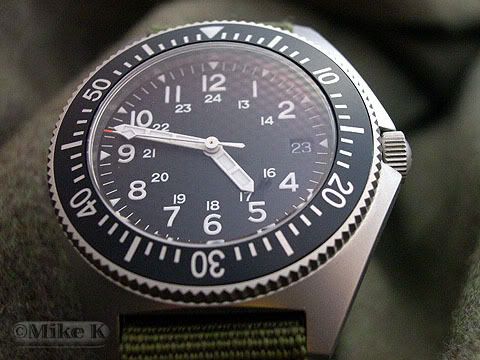


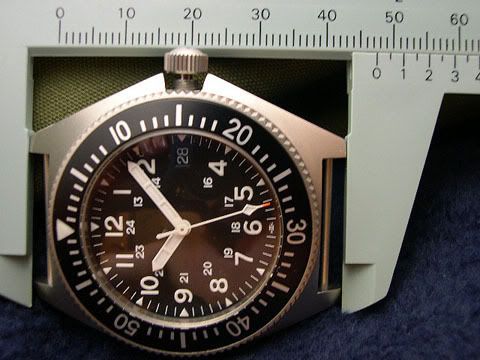
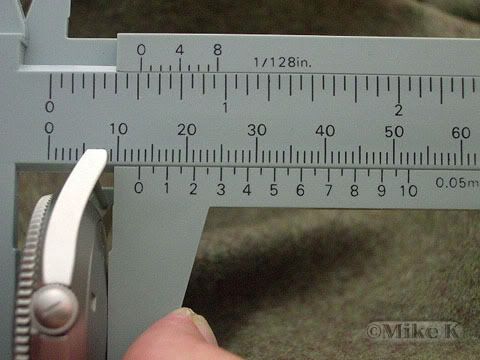
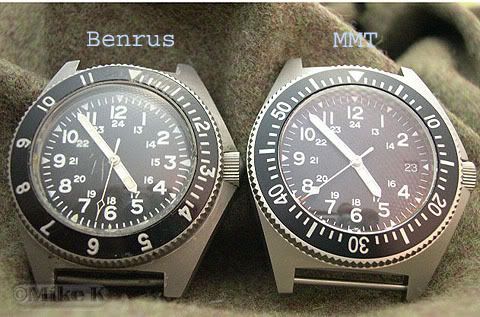
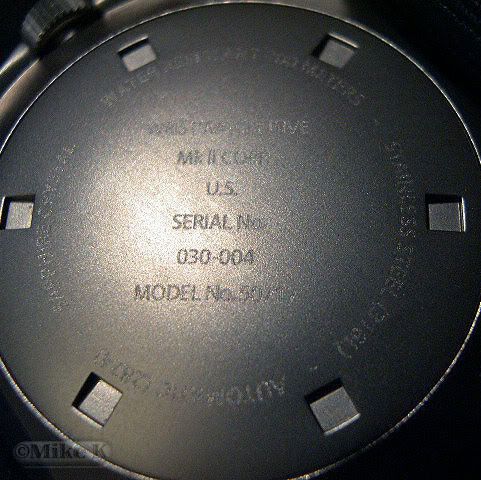
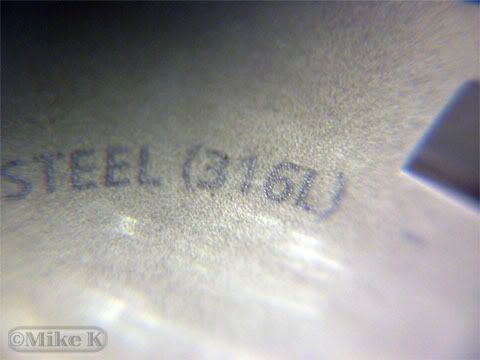
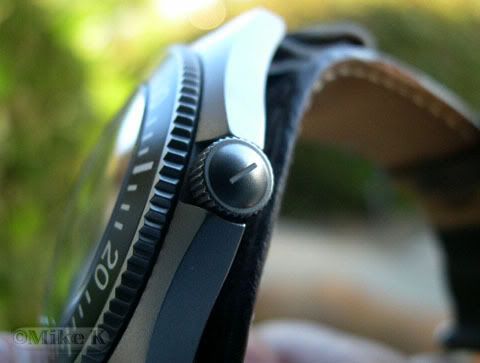
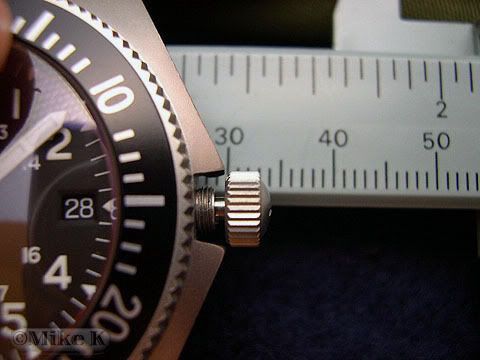
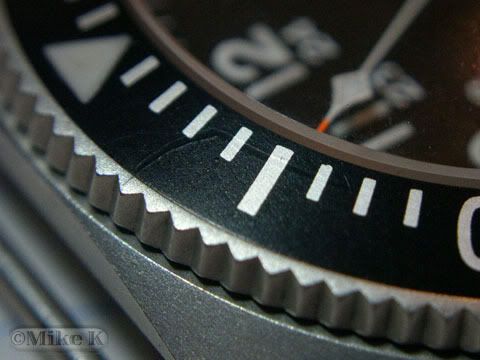

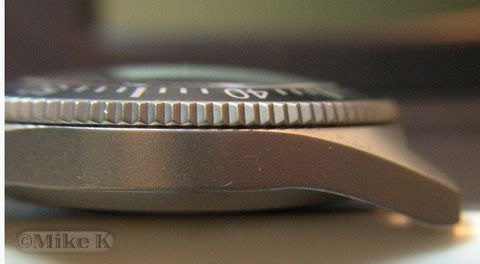


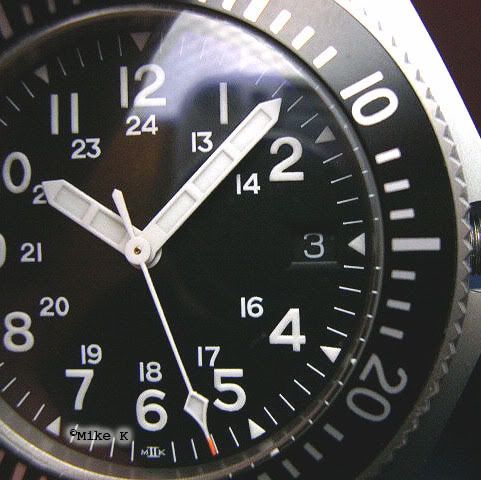
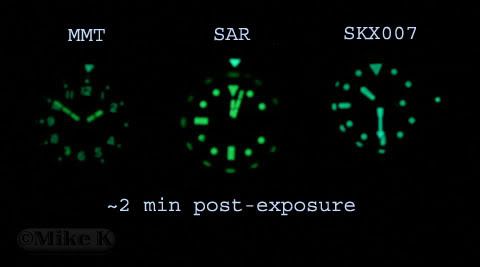


 Reply With Quote
Reply With Quote